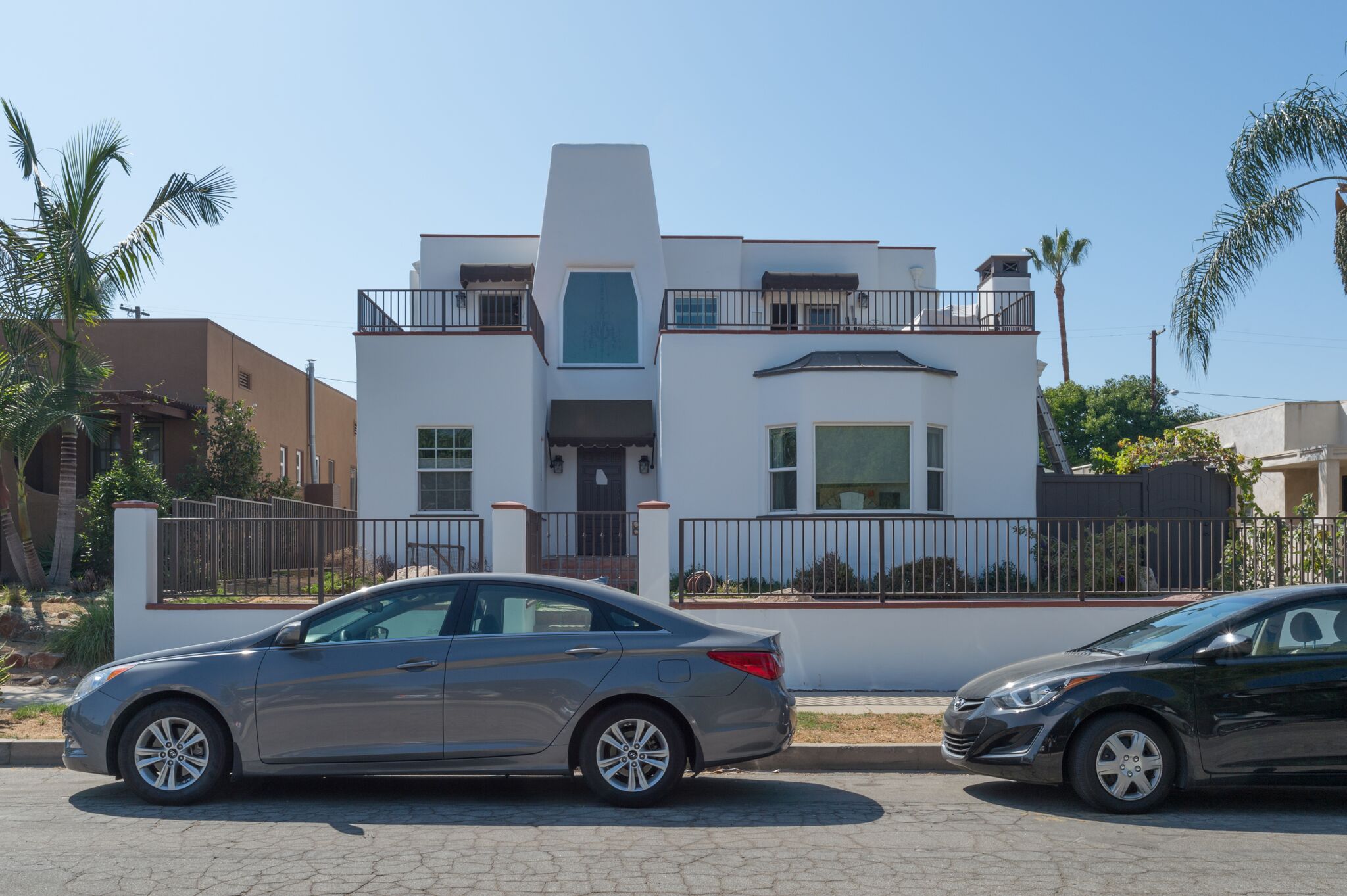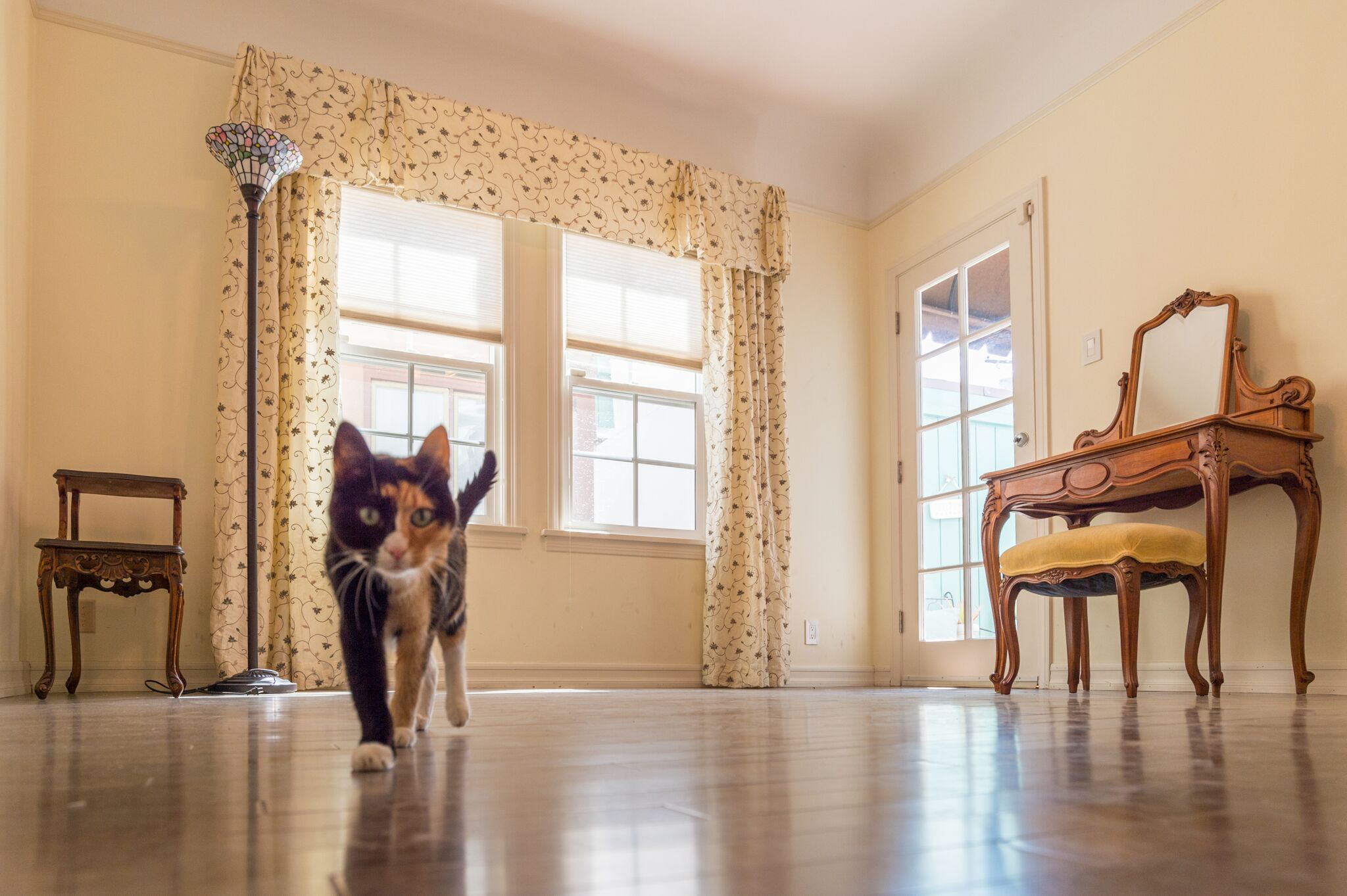Share

California is famously a home for abrupt shifts and sudden transformations in culture, lifestyle, and technology.
And our homes can change as profoundly as our state does.
Few places better represent change than the Long Beach home that my great-grandparents, Raymond and Rebecca Corcoran, paid $8,000 to have built for them on Bennett Ave in 1935.
I visited the home recently as part of a quest to understand more intimately how California housing has changed. This fall, I studied six different houses, all of which had deep meaning to members of my large extended California family.
Older Homes Require TLC
Behind today’s crisis over the cost of housing and our failure to build enough new homes lies a more essential problem: the rapid aging of the places where we live right now. The median age of a dwelling here is now 46 years, compared to 37 nationally. Older houses require more from us — more maintenance and more money — even as our incomes stagnate and we get older.
On this housing journey, I found myself asking: do we still own our houses and the dreams they embody? Or do they now own us?
Originally, the Corcoran home at 255 Bennett was a one-story white colonial, with three small bedrooms, two bathrooms, and a living room and dining room, on one of the higher spots in Long Beach’s Belmont Heights section. Breezes from the ocean, about a mile away, cooled the house even on the hottest days.
Raymond and Rebecca were Southerners (he from Charleston, she from Norfolk) who had traveled the world with their four children — two boys and two girls — to wherever the Navy sent them.
The House at 255 Bennett in Long Beach

But Commander Corcoran retired in 1933, and looked for a place big enough for his family and small enough to afford on a Navy pension. Belmont Heights was a middle-class neighborhood that mixed small stores and churches with single-family houses, duplexes, and small apartment buildings. That mix made the neighborhood resilient, and accounts for its strength and attractiveness to this day.
The house at 255 Bennett was always full – of people (of the Corcoran children and grandchildren and their many associates), of books, and of furnishings they had picked up during Navy postings in China, Hawai‘i, and Boston. Food — fried chicken, cooked carrots, various pies — were left out on the porch for people to eat.
When Raymond died unexpectedly in 1950, it wasn’t clear whether Rebecca—or Great Gram, as I called her — could afford to remain on a modest income. But she did, by living simply, maintaining a robust sense of humor, and investing her meager income conservatively with a local broker. She never had a TV or a car. She rode her bike to the grocery store, and took the bus to church. When she really needed a ride, she would get one from her wisecracking friend Daisy, who drove even though she was legally blind.
House Is Sold in 1981, Renovations Begin
In 1981, Great Gram became too frail to keep up the house, and so it was sold. The place would never be the same — literally. The new owners, who had young children and needed more space, undertook renovations that added a second story and a lap pool, which replaced the driveway and backyard. Eventually, the small colonial became a six-bedroom Santa Fe occupying 4,400 square feet of a 6,500-square-foot lot.
Chris J. Frisco, now a Superior Court judge, bought the place well after the renovation, and still marvels at the house’s “positive energy” and “feng shui.”
“I just loved the house,” says Frisco, who owned it from 2002 to 2005. “One of the very saddest days of my life was the day I left.”
House That Cost $8K is Now Worth $2M
This radically different house (its appearance has more recently been altered to look more Spanish than Santa Fe) is much more valuable — real estate sites suggest it’s worth $2 million. But expansion has had its costs. The upkeep of a bigger place has weighed on a succession of owners. It also became emptier than it was as a much smaller house.
In this, the house is thus characteristic of a California where homes have gotten larger, even as our families have grown smaller. It’s an ironic example of how our dreams and our housing can work at cross-purposes. A state so short of housing in some places has more than enough space in others.

When I visited today’s owners this fall, Dennis and Jennifer Richey, they were struggling through the end of a difficult renovation. The results looked beautiful — the place had more functionality and was a better fit for the retired couple. The Richeys have the place to themselves, each with a den to which they can retreat to get things done.
As I walked through the home with them, we talked about things that remain from the original home: a front bay window, a couple of bedrooms, and a trap door in one closet that my great uncles, as boys, used to sneak into the basement. It felt as though we were rattling around in the twilight zone between an older California dream and a newer one. Jennifer told me her “woo woo” friends, when visiting her here, have detected a woman’s presence, the occasional shadow moving through a door.
“But it’s a kind haunting,” she said.
The Richeys are both Southern Californians — she from Glendora, he’s a Long Beach native — and they are wistful for the days when homes were less expensive and ownership less taxing. Jennifer tells me that she now rents the condo she owned before she married Dennis to their daughter, while another daughter, a university math professor, rents a one-bedroom in Seal Beach.
“My children can’t buy a house in California anymore,” she says.
There is now talk of bringing a historical designation to the neighborhood, which remains as cool and lovely as ever. As I left, the sounds of an aria wafted over the block. The opera singer across the street was giving a lesson.
About the Author

Joe Mathews writes the Connecting California column for Zócalo Public Square. This is an excerpt from a longer essay at this link
Categories

Fresno County Firefighters Contain Reedley House Fire


















